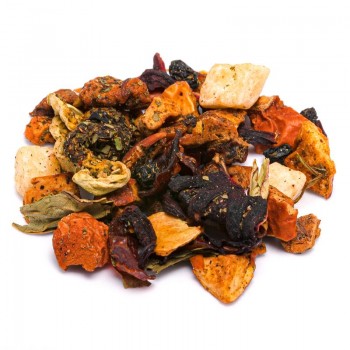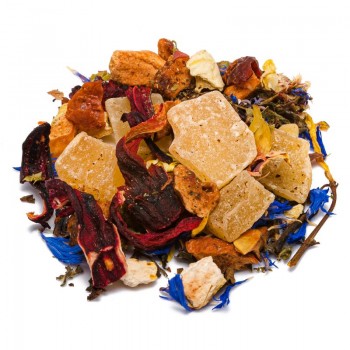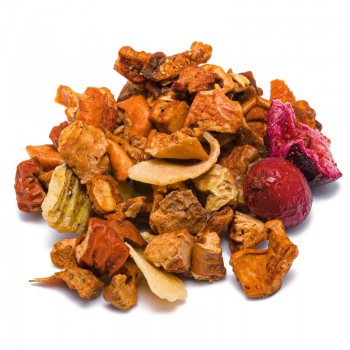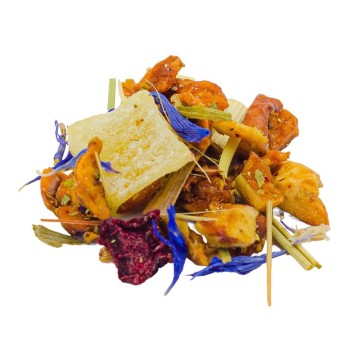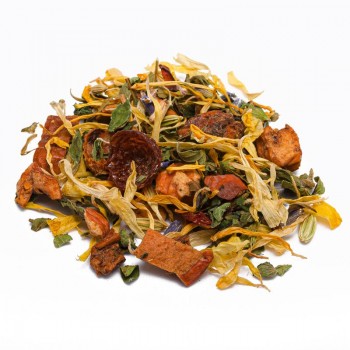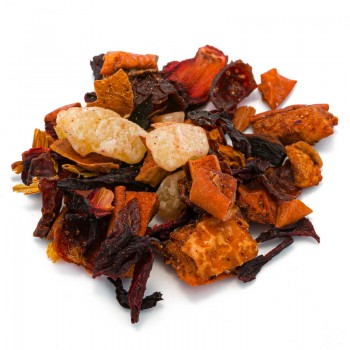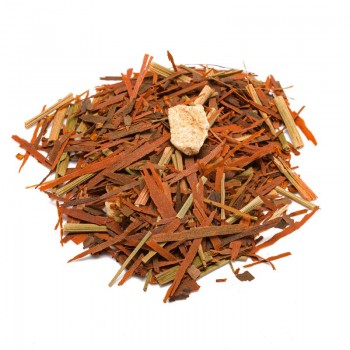The lively flavored blend highlights citrus fruits with a unique flavor thanks to juicy mandarin and orange, combining both sweet and slightly pungent notes of lemongrass. As a fruit infusion, the apple flavor perfectly complements the citrus in this creation, adding sweet notes of rosehip, with a hint of floral and vegetal nuances of crimson rose, blackberry leaves and carrot flakes. The result is a unique and unrepeatable infusion, perfect as a citrus and thirst-quenching drink in summer, but also hot to savor an intense, fruity and aromatic flavour.
Mandarin and bergamot infusion: properties and benefits
Among the healthy virtues of this blend, there is the richness of antioxidants and some vitamins that strengthen the immune system. Tangerines, oranges and rose hips contain a high level of vitamin C, an antioxidant that helps fight a number of unstable molecules in our body that can damage cells. Vitamin C is also useful for the correct functioning of the healthy immune system and for the well-being of the skin.
An infusion made up of citrus fruits such as mandarin and orange, together with lemongrass and apple is also excellent for the digestive system: citric acid is useful in case of digestive difficulties, cramps and nausea. The purifying effect helps keep the stomach and intestines clean, eliminating toxins from the body. An infusion is also useful for promoting diuresis, therefore increasing the detox effect and stabilizing blood pressure together with potassium (contained in mandarins).
The presence of blackberry leaves enhances good food transit and promotes good intestinal bacterial flora. Additional antioxidant bioactive compounds derive from carrot flakes, dense in vitamin A, polyphenols and anthocyanins. Other polyphenols come from orange peels, which can also act as a natural sweetener. You'll get the flavors and nutrients of fruit without added sugar.
Origins and history of cultivation
Mandarin is a citrus fruit born in Asia, which perhaps derives from oranges grown in India over 3,000 years ago. In any case, they originate from the tropical and subtropical regions of Asia, soon spreading to the Philippines as well. Known for millennia in this area, an important fruit for the Chinese New Year as a symbol of wealth, luck and abundance.
They were consumed for their sweet taste and health benefits. Traditional Chinese medicine used the essential oil and dried peel to regulate "qi" (life force) and to treat various ailments. Over time, they were classified with various names, due to the many varieties, including Citrus nobilis, Citrus deliciosa and Citrus chrysocarpa, while today they are recognized as Citrus reticulata. The fruit took the name mandarin when it was introduced to England from China in 1805, assimilating it to the color of clothes and the language spoken by public officials of the Chinese government - the Mandarins. Since then they were then introduced into Europe, up to the Mediterranean areas.
They were introduced to the United States by the Italian consul in New Orleans in 1850, and then came a variety of the fruit from Vietnam (royal mandarin) and Japan, the owari satsuma. To date, there are many hybrids or different varieties of mandarins, which produce fruit of different sizes and colours, such as mandarin oranges; some varieties are seedless. They are cultivated in almost all tropical, subtropical and temperate areas of the world.
Fruits and flowers
The components of the infusion are various, the mixture includes leaves, fruits and flowers of different origins. The mandarin (Citrus reticulata) is a tree belonging to the Rutaceae family. The tree is not very large, showing thin twigs and shiny evergreen leaves. When flowering, fragrant white flowers emerge, followed by the fruit, with reddish skin. Tangerines are juicy, typically sweeter and less acidic than regular oranges. The distinctive feature compared to the orange is the easy-to-peel peel, for which mandarins are also called glove or soft-skin oranges. The Rose is a perennial plant of the Rosaceae family. There are over three hundred species and thousands of cultivars of this plant, famous for its flowers. It can appear in the form of erect shrubs, climbing, thorny or not. The flowers change in shape, size and color from white to yellow and red. Most species are native to Asia, and the dog rose bears a fruit, the rosehip. The tree ofThe orange is Citrus sinensis L. belonging to the Rutaceae family.
Many scholars think that Citrus sinensis is a hybrid plant, a cross between the pomelo and the mandarin born in China. Over the centuries, many varieties of orange have been developed, and sweet oranges are distinguished from bitter oranges. Apples derive from the Malus domestica plant of the Rosaceae family. It is a tree native to Asia, now widespread throughout the planet. The fruits vary in color and in many varieties, and have been used in human nutrition for millennia. Lemongrass comes from the Cymbopogon nardus plant, of the Poaceae family, native to southern Asia. It is a cross between a scented geranium and lemongrass. It shows very long leaves, with an intense green color and grows up to approximately 2 meters. The blackberry is the fruit that derives from the bramble Rubus Fruticosus L. and belongs to the Rosaceae family. It grows spontaneously in Mediterranean countries as a perennial and thorny plant, which creates blackberry thickets. Daucus carota is a herbaceous plant belonging to the Apiaceae family. Donate one of the most common vegetables, the root of which is consumed. The plant is biennial, has a green stem and fine leaves. It is widespread in Europe, Asia and North Africa. Safflower derives from the branched plant Carthamus tinctorius, of the Asteraceae family. Also called saffron (used as a saffron substitute), it originates from arid environments, with seasonal rainfall. The dried yellow-orange flowers are used for infusions and in the production of cosmetics.
Nutritional values of mandarin and bergamot infusion
The main active ingredients of the infusion are vitamins A and C, minerals and organic acids (citric acid). Substances such as limonene are present as well as linalool, citronellol and other elements. How to use the ingredients in the infusion The infusion is obtained by placing approximately 3-5 grams of the mandarin and bergamot mixture with water at 100 °C in a cup (250 ml). Leave to infuse for 10 to 12 minutes before drinking. Add honey or sugar, if desired.
Mandarin and bergamot infusion: side effects and contraindications
To best obtain the benefits of this infusion, it is necessary to respect the recommended doses and not exceed consumption for too long periods. Excessive intake can cause stomach acid, headache, diarrhea, nausea and digestive problems for those who suffer from sensitivity to some ingredients.






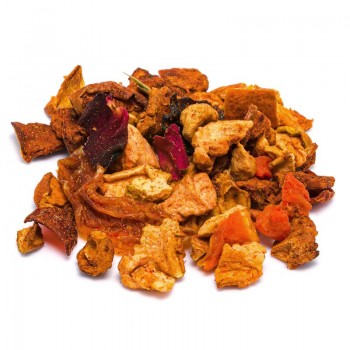




 No reward points for this product.
No reward points for this product.
